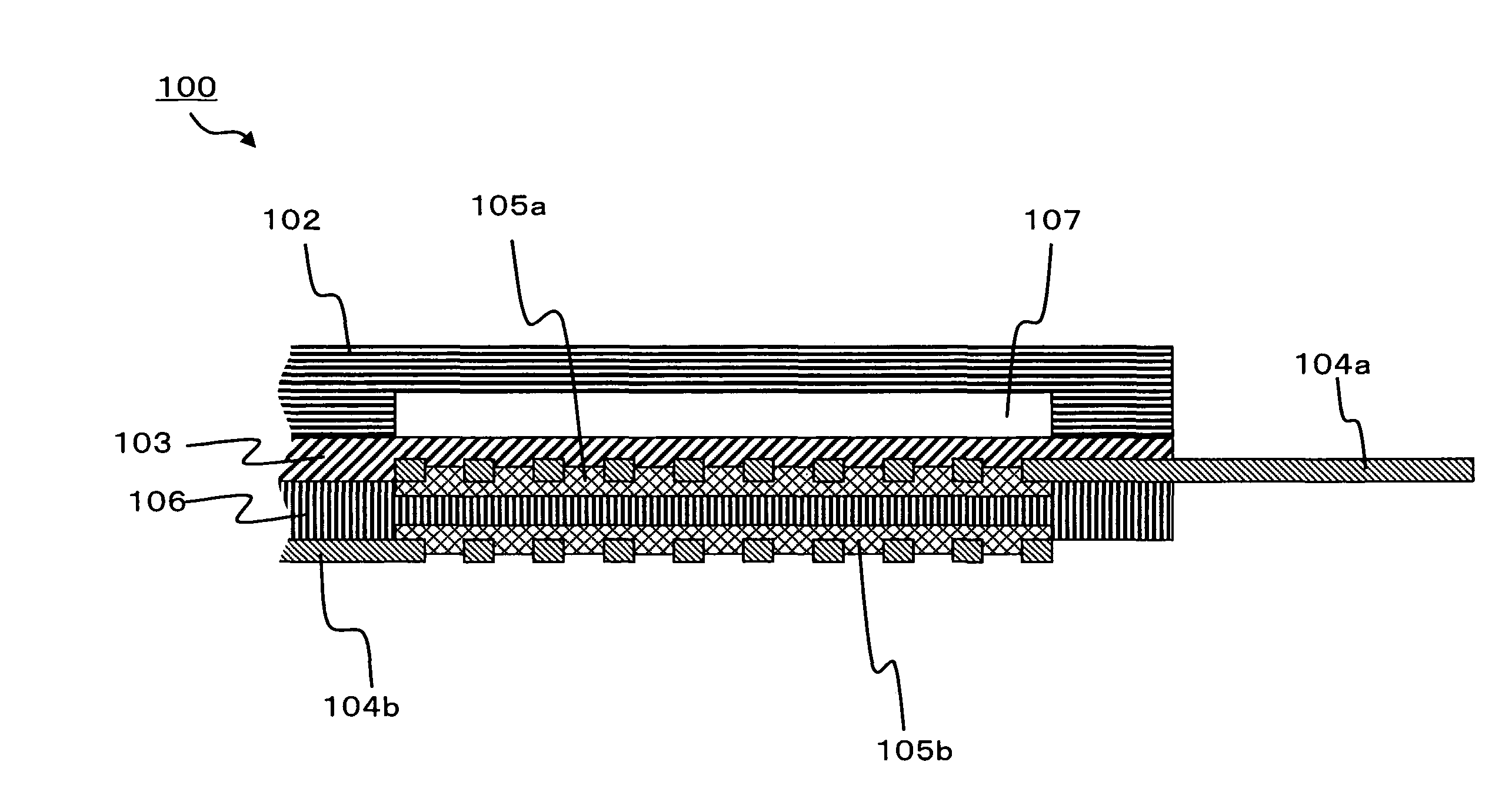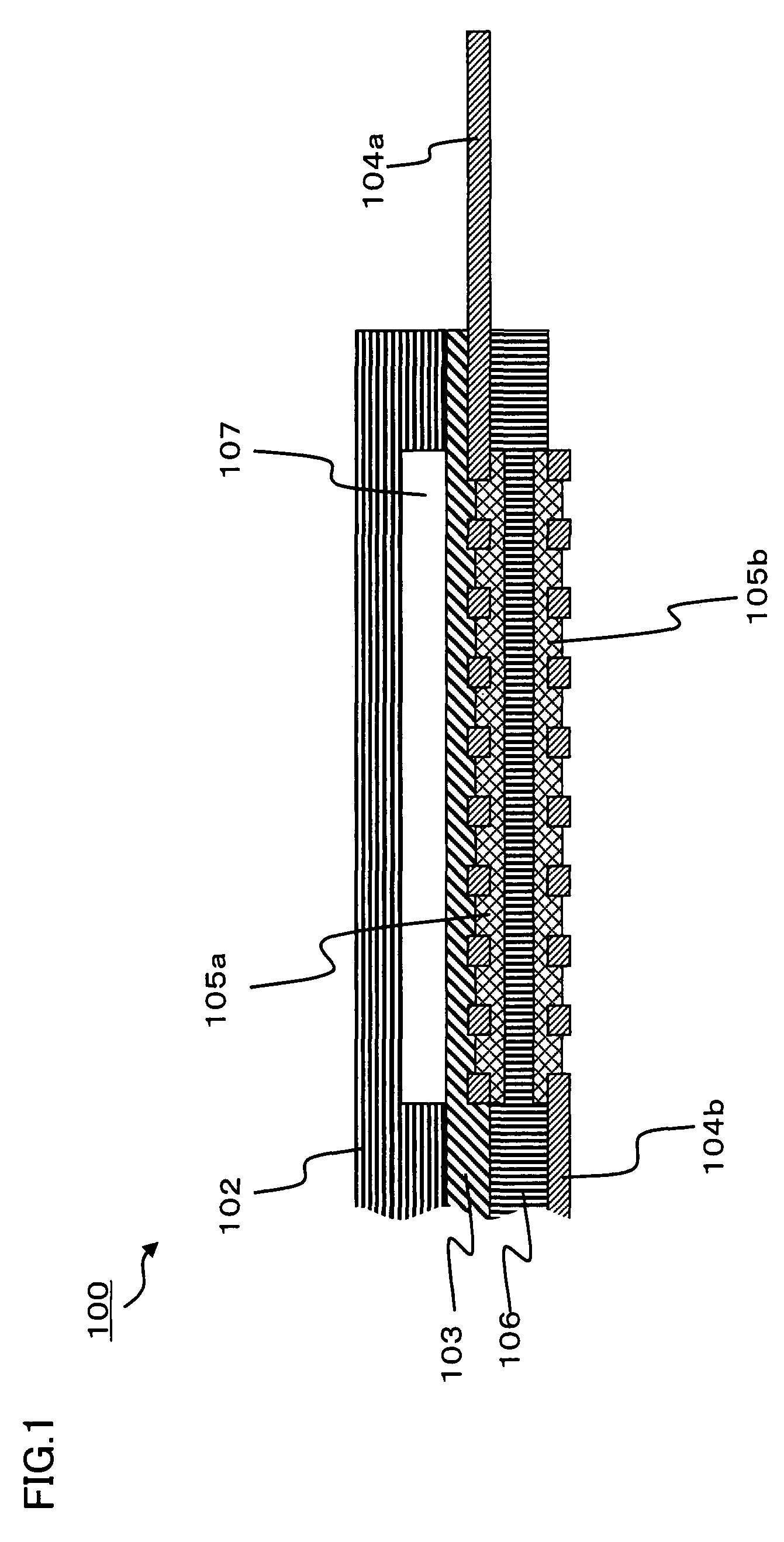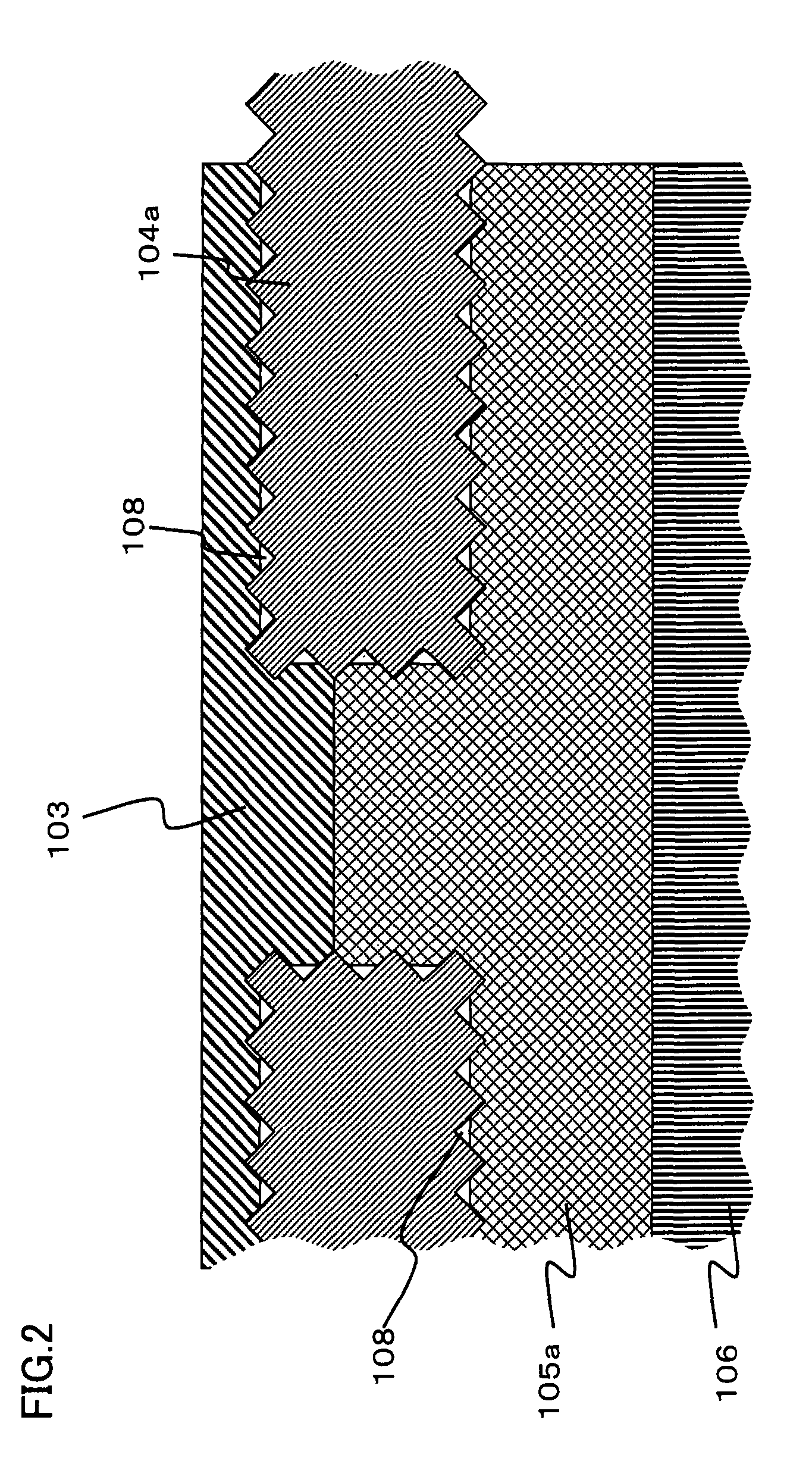Fuel cell, fuel cell system and electronic device
a fuel cell and fuel cell technology, applied in the field of fuel cell, fuel cell system and electronic device, can solve the problems of difficult separation between liquid fuel and exhaust gas generated at the anode, complex system, and leakage of liquid fuel such as aqueous methanol solution from gas discharge hole, and achieve stable and good power generation characteristics and good safety
- Summary
- Abstract
- Description
- Claims
- Application Information
AI Technical Summary
Benefits of technology
Problems solved by technology
Method used
Image
Examples
embodiment 1
[0086]Referring to FIG. 1, a fuel cell 100 includes an anode composed of an anode conductive layer 104a and an anode catalyst layer 105a, an electrolyte membrane 106, a cathode composed of a cathode catalyst layer 105b and a cathode conductive layer 104b, a separating layer 103 provided in contact with the anode, and a housing 102. Housing 102 is sealed with separating layer 103 to form a liquid fuel chamber 107. Anode catalyst layer 105a is typically composed of an electrolyte and an anode catalyst-supporting electrical conductor including anode catalyst particles supported by an anode conductor.
[0087]According to the invention, separating layer 103, which allows the liquid fuel to pass from the liquid fuel chamber to the anode and blocks the movement of gas from the anode to the liquid fuel chamber, selectively allows the liquid fuel to pass through in the thickness direction of the separating layer and hardly allows the exhaust gas generated at the anode to pass through. FIG. 1 s...
embodiment 2
[0117]FIG. 3 shows a case where an exhaust passage is formed in a housing. In the invention, if it is difficult to discharge exhaust gas outside the fuel cell by allowing the exhaust gas to move inside the pores in anode conductive layer 104a, an exhaust passage 109 should preferably be formed in a part of housing 102 so as to be in contact with anode conductive layer 104a in a fuel cell 300 configured as shown in FIG. 3. In this structure, the exhaust gas generated at the anode can be immediately discharged out of the fuel cell. In this case, in order to obtain a strong junction between housing 102 and electrolyte membrane 106, the pores in anode conductive layer 104a may be filled with a gas impermeable sealant 110. Also in such a structure, the exhaust gas can be discharged out of the fuel cell through exhaust passage 109.
[0118]Electrically-Conductive Layer (Conductive Layer)
[0119]The liquid fuel supplied from liquid fuel chamber 107 passes through separating layer 103 and reache...
embodiment 3
[0149]FIG. 5 shows a case where the anode conductive layer is joined to the electrolyte membrane. In the invention, if only a material completely soluble in the liquid fuel is used as the electrolyte, it can become impossible to maintain the shape of anode catalyst layer 205a. Thus, the anode conductive layer is preferably joined to the electrolyte membrane, as represented by anode conductive layer 104a and electrolyte membrane 106 in the structure of a fuel cell 500 shown in FIG. 5. In this case, even when electrolyte 209 in anode catalyst layer 205a is dissolved so that it becomes difficult to maintain the shape of anode catalyst layer 205a, the dissociation between anode catalyst layer 205a and electrolyte membrane 206 can be suppressed so that stable power generation characteristics can be maintained in the fuel cell, because separating layer 203, anode conductive layer 204a and electrolyte membrane 206 are joined.
[0150]Anode catalyst particles 211 function as a catalyst for the...
PUM
| Property | Measurement | Unit |
|---|---|---|
| temperature | aaaaa | aaaaa |
| depth | aaaaa | aaaaa |
| width | aaaaa | aaaaa |
Abstract
Description
Claims
Application Information
 Login to View More
Login to View More - R&D
- Intellectual Property
- Life Sciences
- Materials
- Tech Scout
- Unparalleled Data Quality
- Higher Quality Content
- 60% Fewer Hallucinations
Browse by: Latest US Patents, China's latest patents, Technical Efficacy Thesaurus, Application Domain, Technology Topic, Popular Technical Reports.
© 2025 PatSnap. All rights reserved.Legal|Privacy policy|Modern Slavery Act Transparency Statement|Sitemap|About US| Contact US: help@patsnap.com



